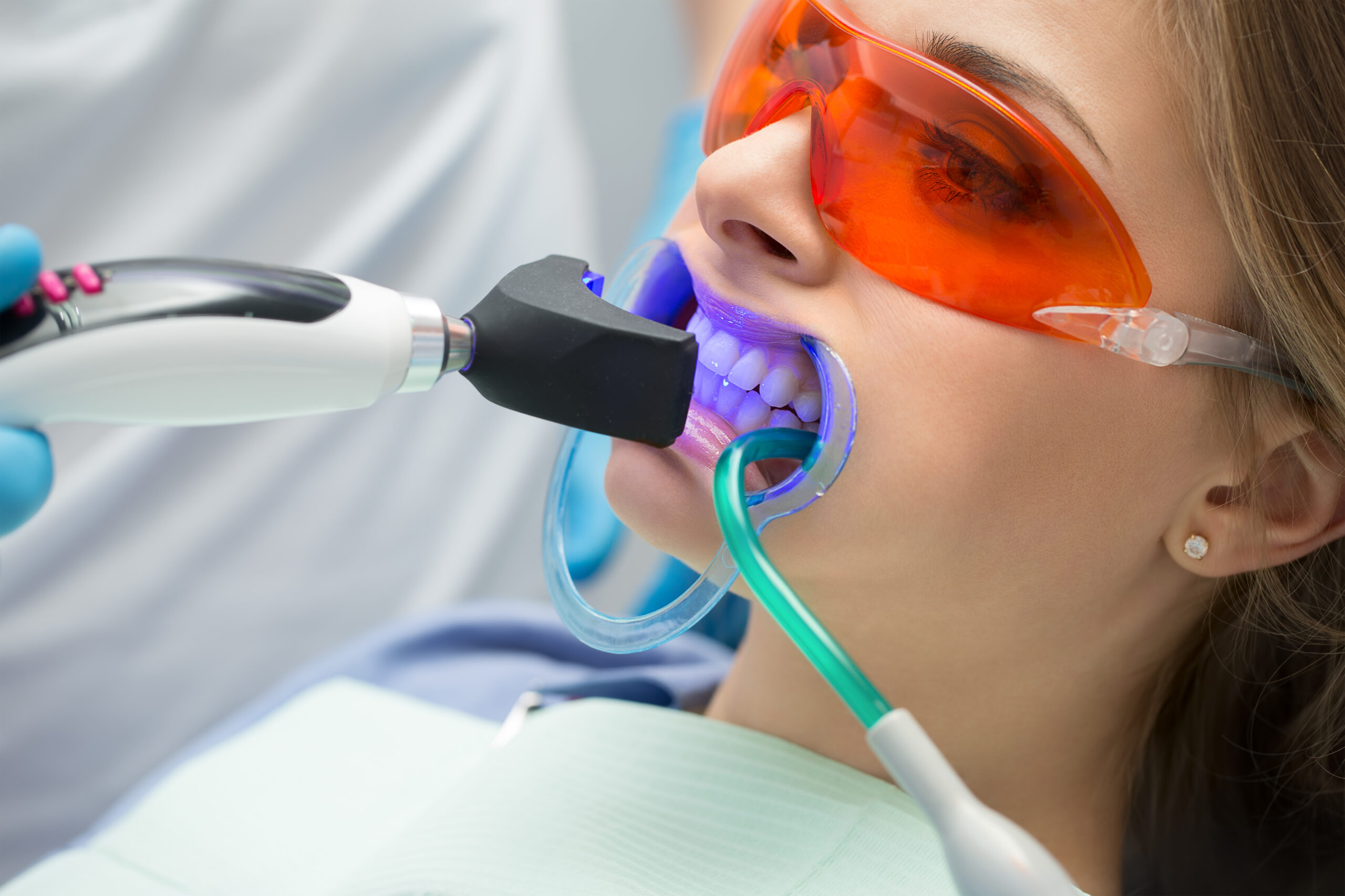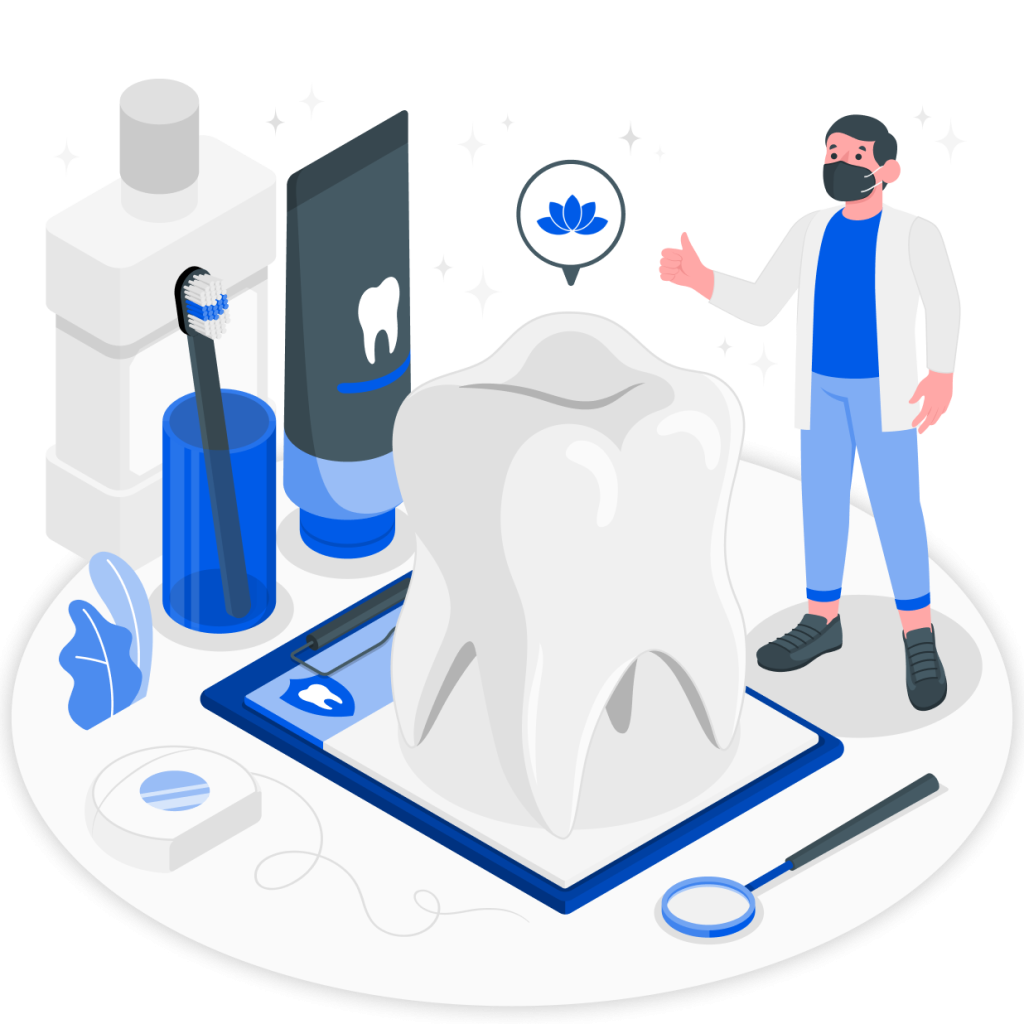Aesthetic appearance is directly related to a beautiful smile. The healthy, white and bright looking teeth are the crown of our smile. Although good oral care ensures healthy teeth and gums, various diseases, chemicals, medications and consumption habits can cause the natural color of the teeth to deteriorate or lose its brightness.
What causes tooth discolouration?
As with the skin and eye color of each person, there are differences in the natural color tones of their teeth. People’s tooth color varies depending on genetic factors, their position in the mouth, eruption times and functions.
After the eruption of teeth, darkening and dulling of tooth color may occur due to physiological aging and wear of enamel tissue. In addition to this natural discoloration of teeth, discoloration can also occur due to developmental or environmental factors.
Tobacco products, tea, coffee, wine, cherry, products containing food coloring, prolonged use of mouthwashes containing chlorhexidine, sports drinks, pool water, chromogenic bacteria, dental plaque and tartar formation cause staining and discoloration of teeth.
Some diseases, traumas, caries, some chemical substances (such as fluoride and tetracycline), amalgam filling, improper root canal treatment and post-core applications that occur during the development of teeth also cause discoloration.
Tooth whitening treatment
In cases where the discoloration of the teeth reaches such advanced levels that the individual cannot fix it with his/her own oral care routines, dentists come into play. Various methods and treatments have been developed in dentistry for centuries in order to respond to the aesthetic concerns of individuals. One of these treatments is teeth bleaching or teeth whitening, which is applied to remove discoloration on the teeth.
In a successful bleaching procedure, it is aimed to remove discoloration within the limits allowed by the natural structure of the tooth, to prevent irreversible damage to the tooth and surrounding tissues and to ensure permanence in the color tone.
3 teeth whitening methods
Teeth whitening can be applied by 3 methods.
What is In-Office Teeth Whitening & how is it applied?
The first of these is the whitening performed by the physician in the clinic, this is called “Office Bleaching“. In this method, first of all, a special protector is applied to the patient’s gums, then a gel containing 25-40% hydrogen peroxide is applied to the tooth enamel to be whitened.
After about 10-15 minutes of application with or without light activation, the gel is cleaned; if necessary, the process can be repeated by applying new gel. The session is usually terminated after 3 or 4 cycles.
After the procedure, the gel is completely removed from all tooth surfaces and the mouth is washed with plenty of water. Finally, desensitizing gel is applied. If the dentist deems necessary, the procedure can be repeated after 1-2 weeks.
What is Walking Bleaching & how is it applied?
In the second method, personal transparent plaques are prepared in the clinic by taking measurements from the patient’s mouth. This method is called “Walking Bleaching“. While preparing the transparent aligners, slots are created on the surfaces that will contact the tooth enamel.
The patient places the gel containing 10-22% carbamide peroxide into the slots in the trays and puts the trays in his/her mouth. The patient applies the aligner for the periods specified by the manufacturer (30 minutes a day, 8 hours a day, etc.). Then remove the tray and rinse the mouth and tray with plenty of water. This application can continue for 1-3 weeks.
In cases where the discoloration of the teeth is challenging, combined whitening protocols in which these two methods are applied together can also be applied. Continuing the process with home whitening after the whitening procedure performed in the clinic ensures that the whitening to be obtained is more satisfactory and long-lasting.
In addition, “touch up” whitening, i.e. reminder whitening, performed with home whitening products deemed appropriate by dentists in periods of 3-6 months, increases the permanence of whiteness.
Applications that are not performed under the control of a dentist can lead to negative conditions such as gum damage, permanent damage to tooth enamel prisms and tooth sensitivity. For this reason, the whitening procedure must be performed after a dentist examination, choosing the appropriate method for the patient and carefully evaluating the results.
What is Zoom Teeth Whitening & how is it applied?
Zoom teeth whitening technique, which is the most effective whitening technique with the least active ingredient among whitening techniques and recommended by Lotus Dental physicians, can provide at least two tons of whitening on your teeth with minimum sensitivity at the end of fifteen-minute sessions.
Zoom whitening sets, which we can support with a home whitening kit, are personalized, one set can only be used for one person. This is guaranteed by Philips Light Chip technology.
Is teeth whitening harmful?
Teeth whitening applied by specialist dentists with the correct procedure does not cause any harm to the teeth. Teeth whitening does not cause any structural changes or permanent damage to the teeth.
However, it should be noted that teeth whitening is a chemical process. Everything used as bleach contains hydrogen peroxide in different concentrations. In teeth whitening, the whitening gel is applied in dental form. In other words, it is more viscous and does not flow into the mouth and contaminate the gums. In addition, this procedure is performed with certain protective equipment to protect the mouth and gums.
Teeth whitening is not recommended for everyone. In order to whiten the teeth, dental problems such as caries, cracks and tooth fractures must first be treated.
What to do after teeth whitening?
- Sour and acidic foods and drinks such as lemon and pickles can cause tooth sensitivity. Consumption of these foods should be suspended for a while.
- Sensitivity that may occur in the teeth can be reduced by consuming warm foods. It will be useful to avoid hot and cold foods.
- Coloring foods and drinks such as red wine, red beetroot, tomato paste and forest fruits are foods that are not suitable for consumption for 3 weeks after whitening.
- Products such as cigarettes, tea and coffee are not recommended, especially in the first weeks, as they will reduce the permanence of whitening.




